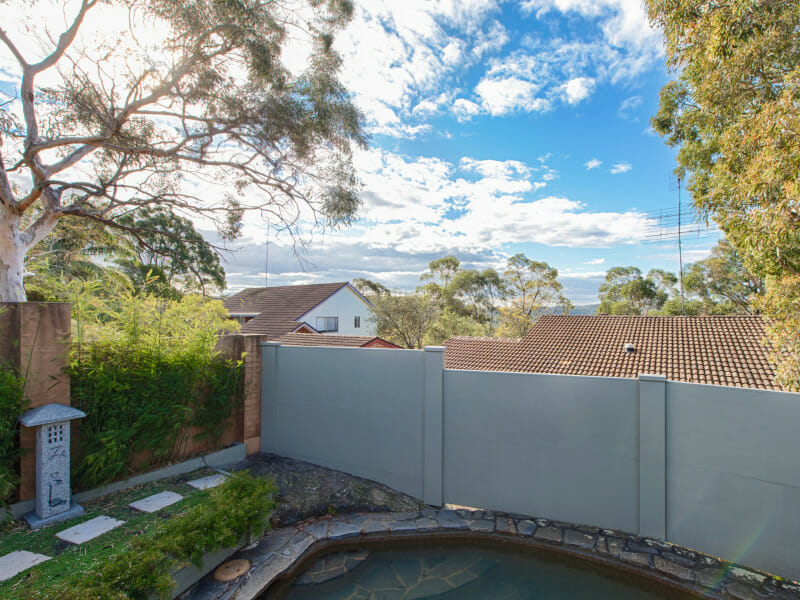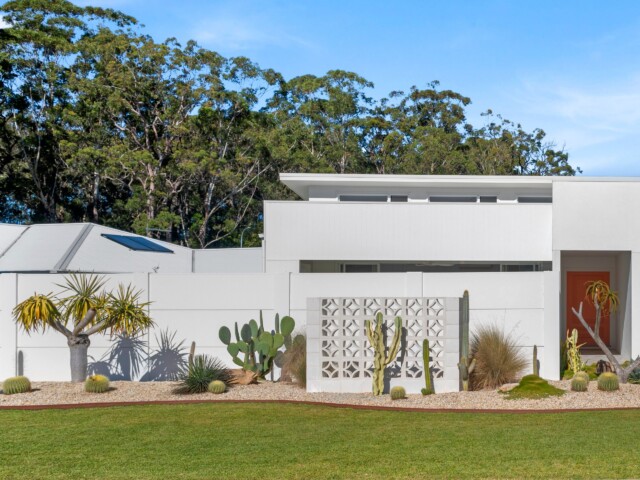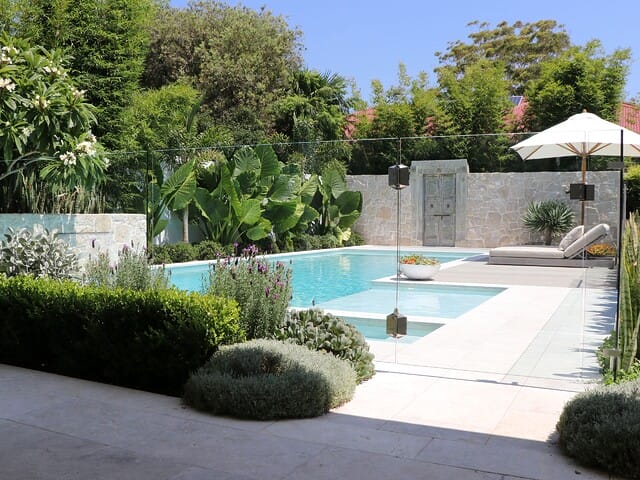Since its invention in 2002, ModularWalls has revolutionised Australian backyards, with over 16,000 projects choosing to #makeitmodular. So, how does it stack up? Check out our latest comprehensive side-by-side comparison against brushwood fencing.
Cost
Firstly, let’s look at the main question on everyone’s mind…what sort of price difference are we looking at, here?
According to this cost rundown and this brush fence report, brushwood fencing ranges from around $130 – $270 per lineal metre, depending on if you choose hand-packed or panels.
Modular fencing more or less sits on the same scale, depending on the type of wall style you choose (following costs are per lineal metre at 1.8m high):
- $163 +GST for SlimWall modular fencing
- $218 +GST for TrendWall modular fencing
- $228 +GST for a VogueWall modular wall
- $247 +GST for an EstateWall modular wall
When it comes to ongoing costs, both have a substantial lifespan. However, you will need to replace the top roll of brush fencing every 5-7 years for adequate maintenance, whilst ModularWalls will only require a fresh lick of paint to refresh its look.
Take home message: ModularWalls fencing and brushwood fencing sit around the same price point.
Can you DIY it?
Brush fencing can be DIYed, but requires quite a lot of confidence in your skills; even the panel options require a fair amount of detailed manual construction. Many brushwood contractors advise you leave it up to the professionals to ensure that it is installed safely and securely.
On the other hand, ModularWalls’ systems were specifically engineered for the DIYer. As long as you have two people, you simply concrete the posts in, slide in the panels, pop on the capping and finish as desired. The best part? You save a huge portion of money, without the labour costs!
Take home message: ModularWalls are DIY friendly for all skill levels, while brushwood fencing requires highly skilled DIYers.
Watch full backyard renovation with Style Curator here!
Installation
Brushwood fencing installation is a manual process and subject to many design factors; therefore, it is tricky to estimate long installation times. However, brushwood panels can offer tighter turnarounds than hand-thatched options. Alternatively, installing ModularWalls is broken down into 4 simple steps; in fact, you can install a 10m run in a single weekend, as seen above!
Another notable factor is the level of customisation available for installation. Hand-packed brush can be curved around gardens or even constructed around existing trees and structures, whilst ModularWalls’ panels can be easily cut to size to accommodate unique site conditions. Additionally, due to its light weight and post and rail construction, ModularWalls can be built over underground services, easements or close to pool boundaries.
Take home message: On average, ModularWalls fencing can be installed faster than brushwood fencing, whilst both options can overcome unique installation challenges.
Noise reduction
If 60mm or thicker, brushwood fencing can reduce noise through a combination of reflecting and absorbing it.
However, not everyone has the space for such a thick fence. If you’re after a more slimline design, ModularWalls’ products start at 50mm thicknesses and have been tested by the National Acoustic Laboratory of Australia, offering an average 20-25dB reduction.
Take home message: Both options are known to offer noise reduction, whilst ModularWalls have been tested by the National Acoustic Laboratory of Australia.


Aesthetics
At first glance, it is almost impossible to compare the look of each fencing type, as they both offer such different aesthetics. Brush fences offer a natural, rustic look, whilst ModularWalls offers a more modern, premium finish.
However, with time, these aesthetics do age differently. Over the years, ModularWalls will simply require a fresh coat of paint every 5-7 years to look good as new again. Brush fencing, on the other hand, will need more regular repairs and replacements to keep up its aesthetic integrity.
There is also the factor of customisation to consider. Brushwood offers very little scope for personalisation; it generally offers a single aesthetic to all. Modular fencing, however, offers a world of design potential; the wall design itself offers various post, capping and joint options. Furthermore, it can accommodate a variety of wall finishes, including paint, textures, tiling and cladding, and can easily integrate slats, infills, lighting, speakers and letterboxes.
Take home message: Brushwood delivers a natural aesthetic that requires ongoing repairs, whilst ModularWalls delivers more modern, premium aesthetics that are easier to maintain.
Durability
Aesthetics aside, both options do offer a substantial design life. However, there are a few differences in durability:
- Brushwood fencing is susceptible to rot, whereas ModularWalls are not.
- Brushwood is not suitable for any bushfire zones, whilst modular fencing adheres to BAL29 fencing regulations and can be customised to achieve a BAL40 rating.
- ModularWalls offers a 10 year warranty for all their wall systems.
- Brushwood can take a hard hit in storms, with repairs usually needed in cyclonic wind regions. On the other hand, ModularWalls offers options that are suitable up to Wind Region C.
Take home message: Both options are durable, with ModularWalls offering a slight advantage with certain environmental conditions.
Article: Australian Made fencing for harsh Australian climates
Is it Aussie-proof?
As touched on briefly above, ModularWalls does offer advantages when it comes to our beautiful, yet harsh Aussie climate.
For fencing in cyclonic wind regions, brushwood is known to offer wind resistance, but sustain damage in storms and constant wet conditions.
With ModularWalls, our products are suited for all Australian wind regions; in fact, one of our DIY customers from the Whitsundays, QLD, chose a modular wall after Cyclone Debbie tore her brick pool wall down.
However, suitability depends on terrain and height. For more info, you can check out our detailed guide to how to choose fencing for your wind region.
Take home message: ModularWalls is slightly more ‘Aussie-proof’ when it comes to bushfire zones and cyclonic wind regions.



